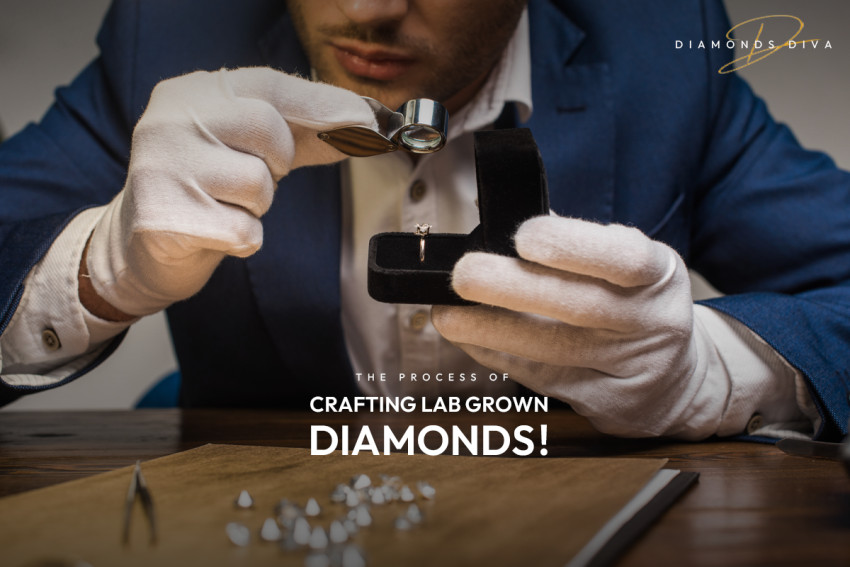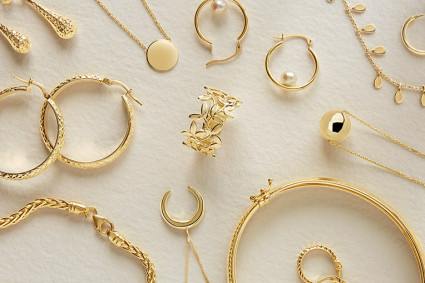
Shoppers are shifting their preference from natural diamonds to sustainable lab-grown diamonds. It can be a bracelet, earring, neckpiece, or just simple finger rings, lab-grown diamonds are everywhere. It is more sustainable, environment-friendly, and affordable compared to natural diamonds. Additionally, it has another benefit, these diamonds can last forever.
Lab diamonds will test similar to real diamonds since they are visually, physically, and chemically similar to their mined counterparts When a diamond tester is used. So, both are identical, but from a natural perspective, Lab-grown is more beneficial.
How many types of Lab diamonds are available?
Before understanding the types of lab-grown diamonds you should know what are these diamonds.
Diamonds- A diamond, whether mined from the soil or made in a lab, is defined by the Federal Trade Commission (FTC) as pure crystallized carbon in the isometric cubic system. Given that lab-grown and naturally mined diamonds share the same chemical, optical, and physical characteristics. It is why the FTC has chosen this definition of a diamond. It means that carbon crystallized is a gemstone known as a diamond, regardless of where it came from.
In every regard, lab-grown diamonds are exact replicas of natural diamonds. Both have the same traits and attributes, including:
Chemical Formula: C
Cubic crystal structure
2.42 Refractive Index
Variation: 0.044
Hardness (10 MOHS)
3.52 Density
The lab-grown diamonds with the same composition as mine diamonds can further be divided into two categories:
High-Pressure High Temperature (HPHT) Diamonds
Chemical Vapor Deposition (CVD) Diamonds
How are Lab Diamonds made?
The most common lab diamonds- HPHT and CVD are made with specific structures and compositions.
HPHT
The first technique for producing lab-grown diamonds was HPHT. By simulating the high-pressure, high-temperature conditions that create diamonds below the Earth, HPHT creates diamonds in a laboratory.
In the 1950s, gem-quality HPHT diamonds were first made available. The HPHT procedure can be used to improve the color of diamonds, making them colorless, pink, green, blue, or yellow in addition to growing diamonds.
To create an HPHT diamond, a microscopic diamond seed is inserted into carbon, the substance that diamonds are composed of. In a process that mimics how diamonds are formed organically underground by the earth, the diamond seed is subjected to intense heat and pressure.
The pressure and temperature on the diamond seed are over 1.5 million PSI (pounds per square inch) and over 2,000 degrees Fahrenheit, respectively. A diamond surrounds the seed as the carbon melts. The diamond is created after cooling.
Also, a rough HPHT diamond uses a different manufacturing process than a CVD diamond.
Given that HPHT diamonds are exposed to nitrogen while forming. Hence this is more likely to have a yellowish color. They also frequently contain metallic, darker inclusions. Due to the rarity of metal capture during diamond production, scientists can utilize these metallic inclusions to distinguish lab-grown diamonds from naturally occurring ones.
In HPHT diamonds, metallic impurities have the potential to make the stones magnetic. Natural diamonds are not magnetic, thus this is another clue that a diamond was manufactured in a lab. According to a 2012 study, more than half of the HPHT diamonds tested showed a discernible magnetic reaction.
CVD
The CVD diamond manufacturing approach is more recent than the HPHT method. It was developed in the 1980s. The CVD process mimics the formation of diamonds in interstellar gas clouds. Compared to the HPHT process, the CVD approach uses smaller machines and lower pressure.
The CVD method places a diamond seed in a vacuum chamber. This chamber is heated to about 1500 degrees Fahrenheit and begins to fill with carbon-rich gases. These incredibly high temperatures cause the gas to transform into plasma and release bits of carbon. These carbon shards are added layer by layer to the diamond seed, from which the diamond forms.
More or less, the CVD produces Type IIA diamonds, which are incredibly uncommon among naturally occurring diamonds. Type IIA diamonds made with the CVD technique is also gaining huge popularity among jewelry lovers. Moreover, these diamonds help scientists determine whether a diamond was formed in a lab or naturally. The most chemically pure diamonds are Type IIA diamonds because they are free of boron and nitrogen impurities, as opposed to HPHT diamonds, mainly subjected to nitrogen. In contrast to HPHT diamonds, CVD diamonds are not magnetic.
It is difficult to identify the difference between an HPHT and CVD diamond with the naked eye. However, the lab experts can easily identify the difference. So, both methods create shiny, bright, and real diamonds, which are identical to earth-grown diamonds.
Conclusion
Lab-grown diamonds are highly demanding diamonds in the modern world. However, if you are planning to buy a lab-grown diamond, the 4Cs of diamond quality should be your top priority. Also, you can opt for GIA or IGI grades to acknowledge its quality.
It is more crucial to choose quality over procedure because a lab diamond's color and clarity can vary greatly regardless of whether it was created using HPHT or CVD.
Hurry! Be a smart customer and choose your certified sustainable lab-grown diamonds. Don't miss out to check the G or better in color and VS in clarity.


